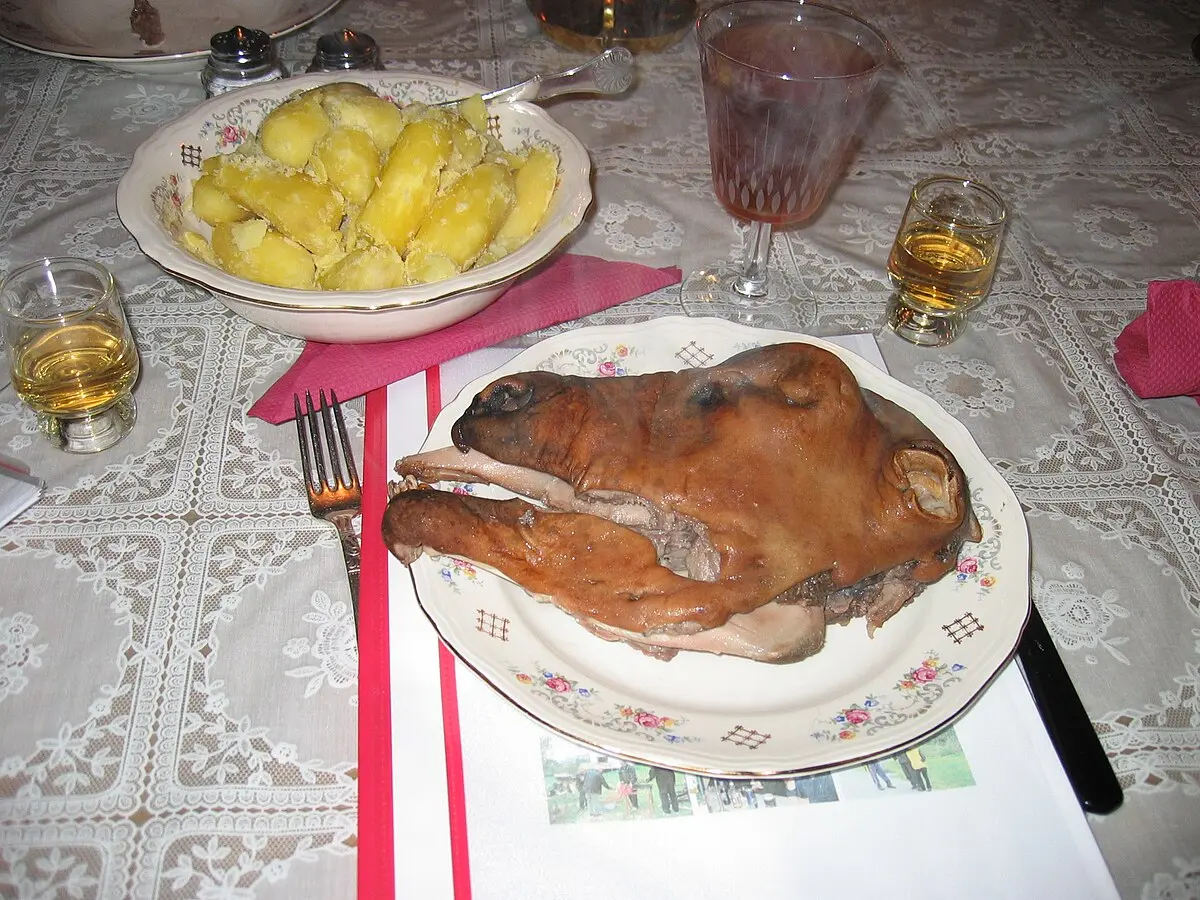Smoked sheep's head, known as smalahove, is a traditional dish hailing from Western Norway. It is a delicacy enjoyed during the Christmas season and holds a significant place in Norwegian culinary culture. This unique dish is made by torched the skin and fleece of a sheep's head, removing the brain, and then salting, smoking, and drying the head. It is then boiled or steamed for several hours and served with mashed swede/rutabaga and potatoes. Smalahove is often paired with akevitt, a traditional Norwegian spirit. Let's dive deeper into the history and traditional consumption of this intriguing dish.

Origin and Etymology
The name smalahove is a combination of two Norwegian words - hove and smale. hove is a dialectal form of hovud, which means head. On the other hand, smale translates to sheep. Hence, smalahove literally means sheep head. This traditional dish originated in Western Norway and was initially consumed by the less affluent members of society.
Traditional Consumption
When serving smalahove, one half of a sheep's head is usually presented. The fattiest areas, such as the ear and eye, are typically eaten first while still warm. The consumption of the head progresses from the front to the back, carefully navigating around the bones of the skull. This method ensures that every inch of the meat is enjoyed.
Legality and Safety
Since 1998, an EU directive has prohibited the production of smalahove from adult sheep due to concerns about the potential transmission of scrapie, a degenerative prion disease found in sheep and goats. However, it is worth noting that there is no evidence to suggest that scrapie can be transmitted to humans. Consequently, smalahove can only be produced using the heads of lambs, ensuring compliance with safety regulations.
Tourism and Culinary Adventure
While smalahove is not universally appealing, it holds a special place for enthusiasts and adventurous eaters. Consequently, it has become a sought-after dish among tourists visiting Norway. Voss, in particular, has experienced a surge in tourism thanks to smalahove. Tourists seek out this unique delicacy, not only for its nostalgic and authentic rural roots but also for the thrill it provides. For many, trying smalahove is a culinary trophy, an experience that pushes their culinary boundaries.
Is smalahove safe to eat?
Yes, smalahove is safe to eat when prepared following the necessary regulations and using lamb heads instead of adult sheep heads.
What does smalahove taste like?
Smalahove has a rich, meaty flavor with a unique texture. The smoking process adds a distinct smoky element to the dish.
Are there any alternatives to smalahove in Norwegian cuisine?
Yes, Norwegian cuisine offers a wide variety of dishes, such as lutefisk (dried fish soaked in lye), rakfisk (fermented fish), and fårikål (mutton stew).
Smoked sheep's head, or smalahove, is a traditional Norwegian dish that has captivated the adventurous palates of both locals and tourists. This unique delicacy requires careful preparation and holds a significant place in Norwegian culinary culture. Whether you choose to embark on a culinary adventure and try smalahove or opt for other traditional Norwegian dishes, exploring the country's gastronomic offerings is sure to be a memorable experience.
If you want to know other articles similar to Smoked sheep's head: a traditional norwegian delicacy you can visit the Traditional category.


Related Articles